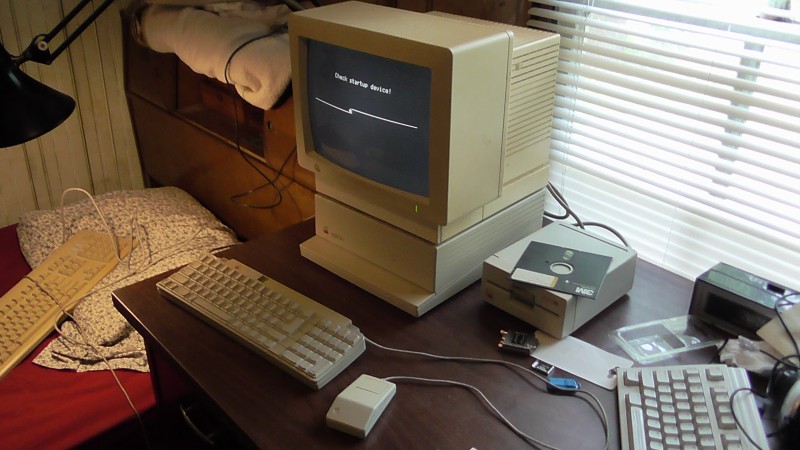First post, by King_Corduroy
- Rank
- Oldbie
Hey guys, I know this isn't a retro "PC" per say but since many of us collect all kinds of retro computers and hardware maybe someone could help me out here. I'm having trouble with my Apple IIgs as the title suggests, what's happening is that without the diskette drive hooked up it seems to boot to the splash screen and then looks for a drive and bootable disk. However when the drive is plugged in it gets to the splash screen and then almost seems to cut power to the main computer as it tries to power and use the drive. Some times I have heard the drive begin to spin but in all cases the power light on the main computer goes out and the drive light stays on. I'm guessing the power supply is just simply too weak and I should buy another one but I figured it couldn't hurt to ask. My worst fear is that something might be wrong with the mainboard. 😒
Here is a pic of it hooked to my Apple IIc monitor because I do not have the proper RGB monitor.

Check me out at Transcendental Airwaves on Youtube! Fast-food sucks!